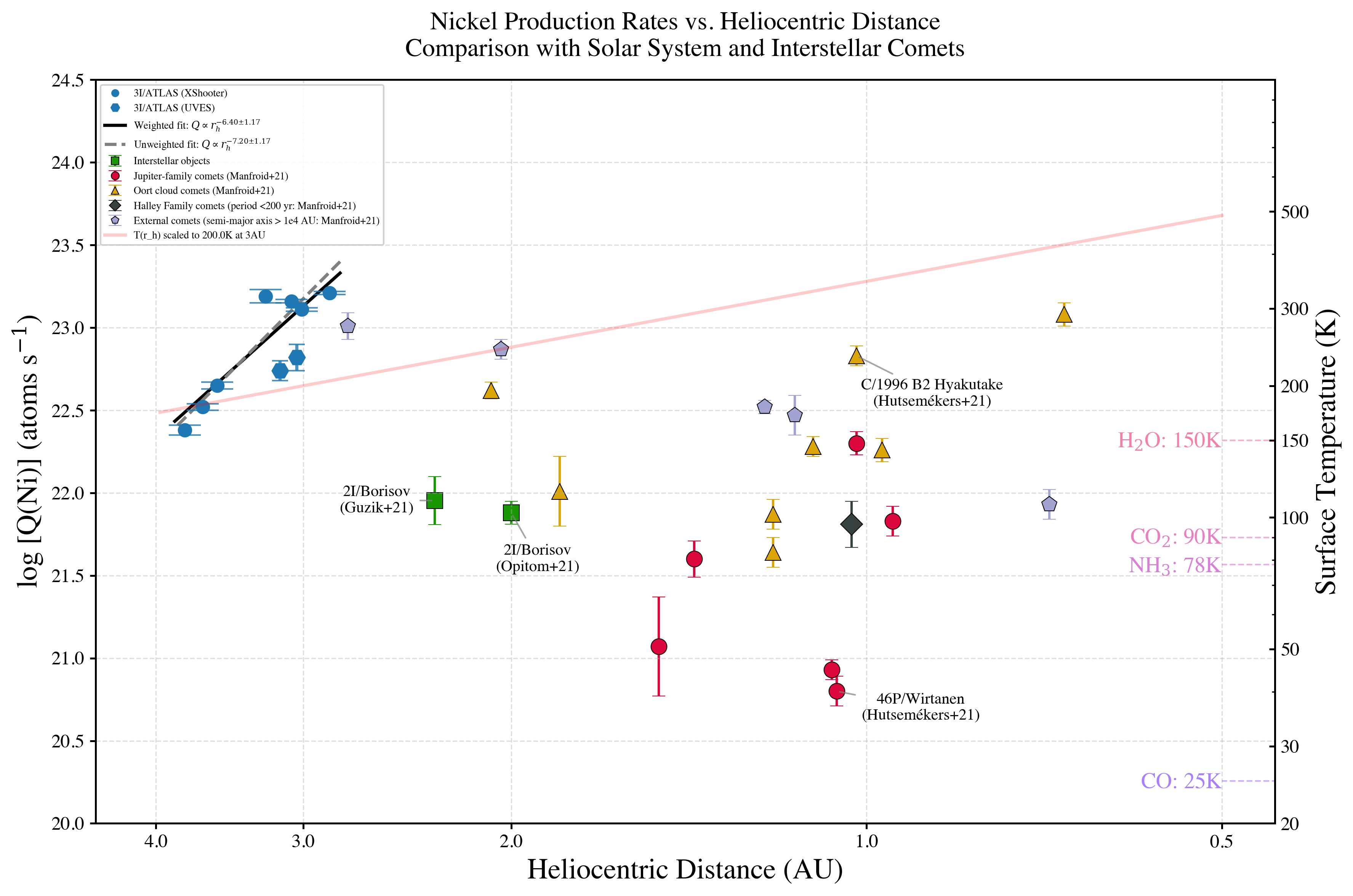Rohan Rahatgaonkar is a Ph.D. Student at the Institute of Astrophysics-Pontifical Catholic University of Chile.
Darryl Z. Seligman is an assistant professor of Physics and Astronomy at Michigan State University.
On July 1, 2025, a routine survey of the sky by the Asteroid Land Impact Last Alert System (ATLAS) detected what would soon turn out to be only the third confirmed interstellar object ever discovered. Unlike his predecessors, the enigmatic ‘Oumuamua and borisov comet — this new visitor, designated 3I/ATLASwas captured early in its journey through our solar system, giving astronomers an unprecedented opportunity to watch an interstellar comet come to life as it approaches. the sun.
What makes interstellar objects so scientifically valuable is that they carry chemical and physical information from the star systems where they formed, potentially billions of years ago. They are like cosmic time capsules, transporting samples from distant places. exoplanetary systems Otherwise, we would never be able to visit and study it directly. The discovery of 3I/ATLAS opens the door to a completely new branch of study in astrophysics.
For our international team using the Very large telescope (VLT) in Chile, 3I/ATLAS presented an extraordinary opportunity to track the chemical awakening of this ancient interstellar object in real time. Our observations using the X-shooter and UVES spectrographs at the VLT revealed a trajectory that suggested it formed billions of years ago, potentially making it significantly older than our own. solar system.
From idle to dynamic
As 3I/ATLAS travels toward the sun, we have witnessed a fascinating chemical activation sequence. Our first significant detection occurred on July 20, when our spectrographs recorded spectral lines consistent with atomic nickel vapor in the comet’s tenuous atmosphere at a distance of 3.88 astronomical units (AU) from the sun, nearly four times Earth’s distance from the sun.
This detection of nickel was unexpected at such great distances, where temperatures are still extremely cold. As the comet continued to approach, we observed that the amount of nickel vapor coming out of the comet kite was strengthening significantly. Our measurements indicated that there was a substantial increase in the number of nickel atoms leaving the comet as it approached the sun.
About three weeks later, in mid-August, when 3I/ATLAS had reached about 3.07 AU from the Sun, we detected the spectral signature of cyanogen (CN) gas, a common molecular emission in solar system comets.

Chemical clues from another world
What makes these observations particularly intriguing and puzzling is the detection of nickel without a simultaneous detection of iron above our instrumental limits. This unusual chemical signature suggests that the nickel is potentially being released through processes that operate at much lower temperatures, rather than through the direct transformation of the solid metal into a gas (a process called sublimation), which would normally require much higher temperatures.
The evidence points to the possibility that nickel atoms may be bonded within special types of molecules that break down easily when exposed to sunlight. These could include molecules in which nickel is bonded to carbon monoxide or other organic compounds, which can release nickel atoms at temperatures much lower than those necessary for the metal to vaporize directly.
These findings, when considered together with observations of the James Webb Space Telescope (JWST), provide complementary evidence to understand the unusual chemistry of this comet. JWST observations revealed that the gas cloud surrounding the comet, called the coma, contains much more carbon dioxide (the same gas that makes soda) as water, a ratio that is unusual compared to most comets in the solar system. JWST also detected particles of water ice and carbon monoxide in the comet’s coma, suggesting a complex mix of frozen materials that are heating up and creating the activity we observe.
Such observations suggest that nickel may be bound to molecules that break down under solar radiation, releasing metals and gases in chemical reactions. But the detailed balance of carriers, their release mechanisms, and how iron and other metals fit into the picture remain active areas of analysis.
Cosmic implication
As 3I/ATLAS continues its journey toward perihelion (its closest approach to the Sun) on October 29, we are collecting valuable data on the chemistry of material from another star system. The chemical signatures we are observing may reflect both the comet’s ancient origins and its long journey through interstellar space.
These observations help us understand whether the building blocks of planetary systems are similar across the galaxy or whether they vary significantly between different stellar environments. By comparing 3I/ATLAS with the solar system’s comets and the previous interstellar visitor 2I/Borisov, we are building a more complete picture of the materials that make up planets around different stars.
The beauty of science lies in following the evidence where it leads, even when the findings defy our expectations. Our 3I/ATLAS observations reveal natural astrophysical processes that, although unusual, can be explained by chemistry and physics. The universe continues to surprise us with its diversity and complexity, reminding us why methodical, evidence-based research remains our most reliable path to understanding cosmic mysteries.
Future prospects
Our international team, including scientists from Chile, Belgium, the United Kingdom, Canada, New Zealand, the United States and Italy, continues to monitor 3I/ATLAS as it approaches perihelion. We expect further increases in activity and potentially new chemical species to emerge as temperatures increase.
With coordinated observations from the ground telescopes and space observatories, we hope to discover more secrets of this cosmic messenger before it leaves our solar system forever, carrying its ancient material back to the vast interstellar void.



